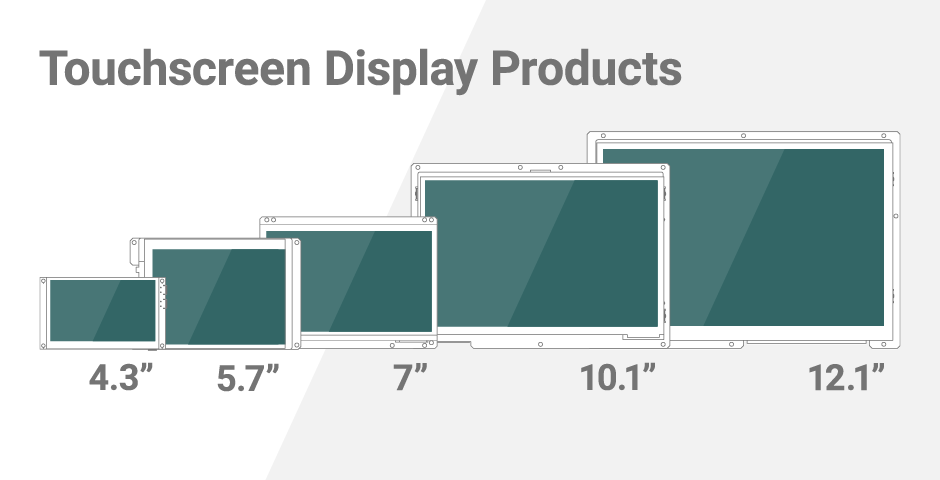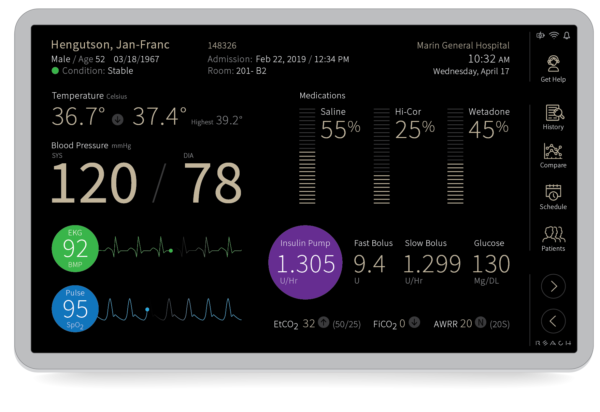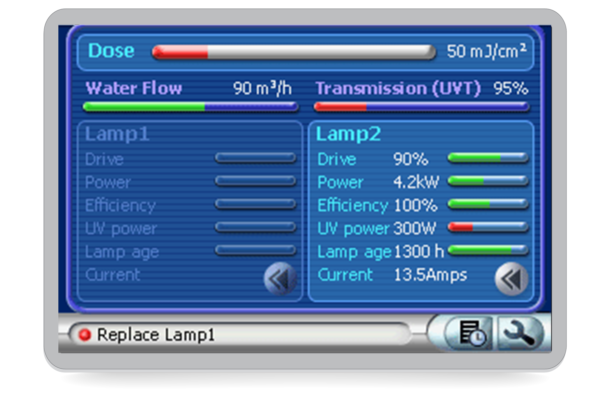Microcontroller Touchscreen
Engineers tell us getting a microcontroller touchscreen up and running from scratch is time-consuming and expensive. There is a steep learning curve, it takes their focus away from their core competencies, and little changes cause big problems related to maintaining the solution over time. The risk of higher development costs, missed production targets, and maintenance headaches cause them to look for something other than a home-grown solution. So they turn to Reach Technology microcontroller touchscreen modules.

Compare Microcontroller Modules
Your choice of sizes (4.3″, 5.7″, 7″, 10.1″ and 12.1″), I/O, processor, memory and touch type. Compare Products
Start with a Kit
Microcontroller touchscreen development kits start at $399, make it easy to get up-and-running.
Choose Between Two Development Environments
What You Get When You Work with Us
Get Started with a Touchscreen Development Kit
3,500+ kits sold to date. 100% Satisfaction Guarantee.
Adding a Touchscreen to a Microcontroller Device
Adding a touchscreen microcontroller to a device or project can significantly enhance its interactivity and user experience. A touchscreen microcontroller, often called a touch controller, is a specialized component that interfaces with a touchscreen panel to detect and process touch inputs. These inputs can be used for various applications, from smartphones and tablets to industrial control systems and interactive kiosks.
Benefits of Adding a Touchscreen
- Enhanced User Interface: Incorporating a touchscreen microcontroller into your device provides an intuitive and interactive user interface. Users can directly interact with the screen by tapping, swiping, pinching, and zooming, making the device more user-friendly and engaging.
- Versatility: Touchscreen microcontrollers can be integrated into various devices and applications. They are commonly used in smartphones, tablets, GPS systems, digital kiosks, home automation interfaces, medical devices, and more.
- Accurate Input: Touchscreen microcontrollers are designed to offer precise and accurate touch input detection, making them suitable for applications that require fine control, such as drawing, gaming, and data input.
- Space-Efficient: Unlike physical buttons or keypads, touchscreen interfaces save space and reduce the need for bulky, external input devices. This is especially important in compact devices.
Steps to Add a Touchscreen
- Select the Touchscreen Panel: Choose the appropriate one based on your application’s requirements. Resistive and capacitive touchscreens are the two most common types, each with its own advantages. Ensure that the panel is compatible with your touch controller.
- Choose the Touch Controller: Select a touchscreen microcontroller compatible with your chosen touchscreen panel. Be sure to consider the desired touch sensitivity, multitouch capability, and the communication protocol (e.g., I2C or SPI).
- Connect the Components: Connect the touchscreen panel to the microcontroller per the manufacturer’s specifications. This typically involves wiring the touch panel’s X and Y coordinates to the microcontroller.
- Programming: Develop or load the necessary firmware or software onto the microcontroller to interpret and process the touch inputs. This includes calibration routines to ensure accurate touch-point detection.
- Integration: Integrate the touchscreen microcontroller into your device or system, ensuring proper mounting and alignment with the display.
- User Interface Development: Create the user interface (UI) for your device or application. This involves designing the graphical elements, buttons, and interactions that users will engage with.
- Testing and Calibration: Thoroughly test the touchscreen interface to ensure it responds accurately to touch inputs. Calibration may be necessary to align the touch points with the on-screen elements.
- Optimization: Fine-tune the touchscreen microcontroller settings and software to optimize the user experience, such as adjusting touch sensitivity and gesture recognition.
Adding a touchscreen microcontroller to a device offers many advantages, ranging from improved user experience to a sleek, space-saving design. The integration of a touchscreen enhances the functionality and usability of devices, making it a valuable addition to modern technology.
Reach Technology touchscreen display modules give you a way to get up in days, and then move smoothly to production. Check out our development kits.
Embedded Touchscreens Made Easy:
Up in Days, Smoothly to Production. Get started with a Development Kit.
Reach Technology is now a part of Novanta.
Sales and Engineering
545 First Street
Lake Oswego, OR 97034
503-675-6464
sales@reachtech.com
techsupport@reachtech.com
Manufacturing
4600 Campus Place
Mukilteo, WA 98275
service@reachtech.com
Please send payments to:
Novanta Corporation
PO Box 15905
Chicago, IL 60693
accounts.receivable
@novanta.com



